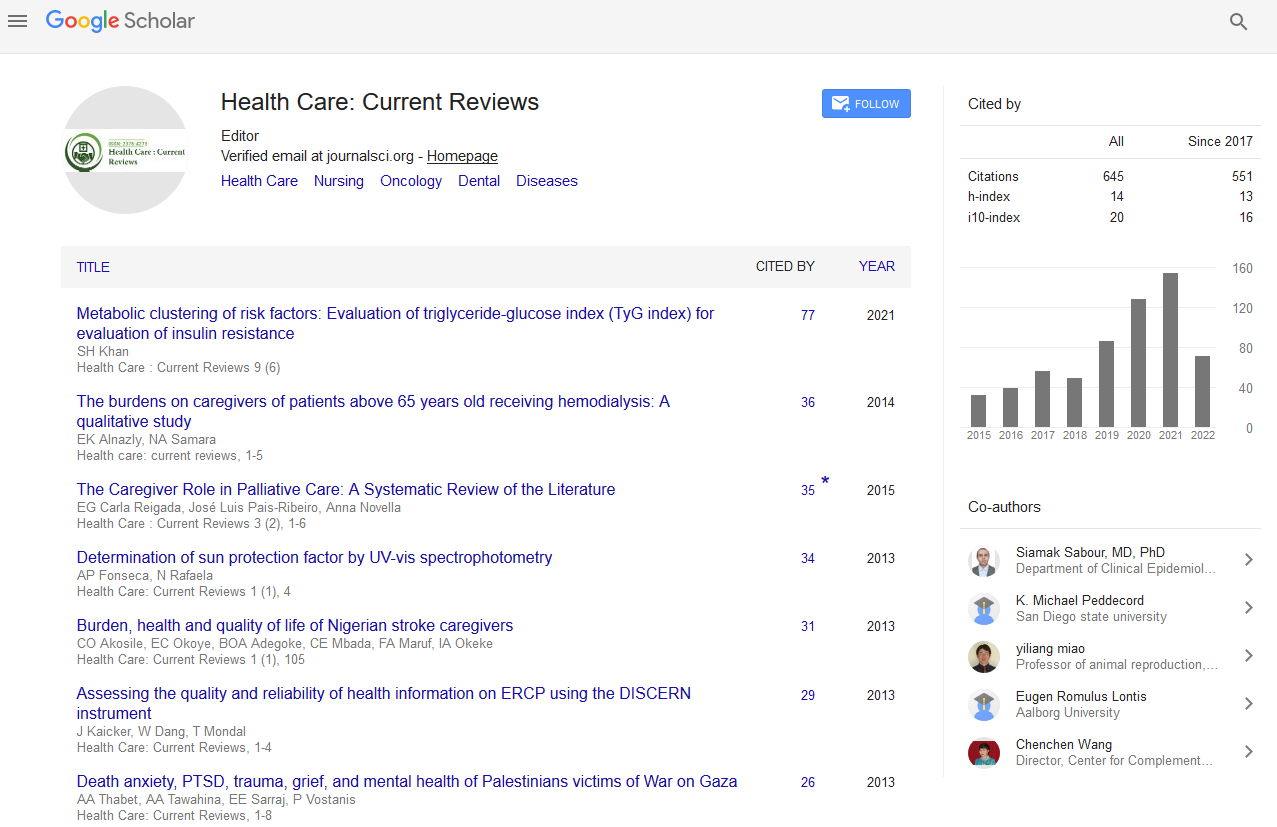PMC/PubMed Indexed Articles
Indexed In
- Open J Gate
- Academic Keys
- RefSeek
- Hamdard University
- EBSCO A-Z
- Publons
- Geneva Foundation for Medical Education and Research
- Google Scholar
Useful Links
Share This Page
Journal Flyer

Open Access Journals
- Agri and Aquaculture
- Biochemistry
- Bioinformatics & Systems Biology
- Business & Management
- Chemistry
- Clinical Sciences
- Engineering
- Food & Nutrition
- General Science
- Genetics & Molecular Biology
- Immunology & Microbiology
- Medical Sciences
- Neuroscience & Psychology
- Nursing & Health Care
- Pharmaceutical Sciences
Epidemiological profile of women with hepatitis B between 2009 to 2013 in western Amazon, Roraima, Brazil
Euro Health Care and Fitness Summit
September 01-03, 2015 Valencia, Spain
Fabiana Granja1, Jacqueline de Aguiar Barros2, Wilson Pereira Lima Junior1, Pablo Oscar Amezaga Acosta1 and Mário Maciel de Lima Junior1
1Federal University of Roraima, Brazil 2Epidemiological Surveillance of Viral Hepatitis, Brazil
Posters-Accepted Abstracts: Health Care: Current Reviews
Abstract:
Roraima is part of the western Amazon with a high prevalence of HBV, the only hepatitis considered a sexually transmitted disease, which has a higher transmissibility. The aim of this study was to describe the HBV carriers�?? epidemiological profile in the state of Roraima between 2009 and 2013. We used data from SINAN (Diseases Information System Notification). For the statistical analysis, we performed Chi-square and student�??s t test. Our study showed 223 women which represent 43.13% of the total sampled carriers, throughout the period observed the predominance of males (X2=9,771, p=0.0018). Among the race we found a predominance of brown with 61.7% compared to 24.2% white, 11.2% natives and 3.13% black (X2=178.05, p <0.0001). In terms of age the prevalence was between 20 to 39 years (53.8%), followed by 40 to 59 years with 27.8%; 11.6% up to 19 years and 6.7% for those over 60 years (X2=120.40, p <0.0001). Only 27.8% reported to have a complete vaccine immunization schedule and 72.2% incomplete or none (X2 = 63.48, p <0.0001). An important fact was that 74.7% (X2=65,308, p <0.0001) of patients detected to be suffering during their pregnancy, these data might indicate that an efficient prenatal can lead to HBV detection and the prevention of mother-to-child transmission (PMTCT). We observed that people who had contact with a HBV carrier also increased their risk of becoming a carrier (p=0.0017, 95% 15.4098 to 33.7902) strengthening intrafamilial transmission as a risk factor. We conclude that women with HBV in Roraima have a heterogeneous distribution of races, were from 20 to 39 years old, don�??t have the vaccine immunization schedule for HBV, found to be carrier during pregnancy and having contact with hepatitis B carrier increases the risk of contracting this virus.
Biography :
Email: fabi.granja@yahoo.com.br


